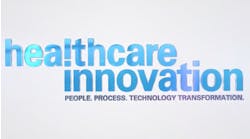The use of health technology—such as telehealth, digital epidemiology tools, chatbot helpers and remote work environments—has ramped up in response to the new realities of COVID-19. These technologies are critical to slow the spread of the virus, care for hundreds of thousands of patients, keep employees on the job and meet business objectives.
Even before the pandemic, healthcare executives were turning to technologies like automation, robotics and artificial intelligence (AI) to reinvent how work is done. While these technologies can offer a range of tremendous benefits – from better health outcomes to greater speed, efficiency, accuracy and bottom-line savings in delivery and operations, a missing factor—employee input—may be preventing healthcare and biopharmaceutical organizations from getting the most out of their technology investments.
A new national survey of U.S. healthcare company employees, commissioned by Eagle Hill Consulting, reveals a gap in the value between companies’ healthcare technology investments and how employees experience them. According to the findings from this Technology in the Healthcare Workplace Survey, healthcare companies are not actually maximizing ROI from technology and automation updates.
It’s not that employees don’t understand that tech advances offer exciting possibilities—they intuitively do. Yet as they see it, technology investments do not necessarily improve performance. While almost half report that their employer introduced a new technology in the last two years, only 29 percent say the company invests in the right technology to support them. And just 42 percent think technology change has had a positive impact on their organization.
The Eagle Hill survey suggests that employees are not confident about technology change because they are not getting necessary support from their employer. Over three-fourths of healthcare workers say they need more skills to adapt to advancing technology. Yet only 44 percent report that their company gives them the right level of support to understand and benefit from new technology solutions.
The best way to give employees the right support when implementing healthcare technology is to ask them what they need. Yet employers are not communicating with employees about technology decisions. Less than 2 in 10 are asked for their input. A troubling 13 percent are completely unaware of technology changes in their company. For the outlier companies that do solicit employee feedback, they typically do it after a solution has been purchased. The lack of early feedback from the people actually using the solution can be disastrous.
It is critical for healthcare employers to ensure they are getting the most from their technology investments both because outlay on technology in healthcare is not expected to slow down and investments will be under even greater scrutiny moving forward as a result of the impact of coronavirus on corporate earnings.
Even before the coronavirus pandemic, according to one industry analysis, the healthcare IT market was valued at $163.3 billion and expected to grow a staggering more than 15 percent annually (CAGR) through 2025.
This kind of sweeping technology change is transforming the employee experience and the future of work in healthcare. But the reality is that technology alone is not a silver bullet. Its impact comes from what people do with technology to help fulfill a company’s mission. So where do healthcare companies go from here to get the most from healthcare technology spend?
First, understand that technology must work for and be understood by the employees using it. Automation and AI offer opportunities for employees to do very different— often more fulfilling—work. For many, this will require developing new skills and ways of working. Yet in what has been a historically tight healthcare labor market, hiring to get these skills is not an option. Upskilling current employees is a must.
Second, recognize what technology can and cannot do. No technology will override outdated business process, broken cultures or skills gaps. And no technology will achieve business goals alone. The key starting point is a root cause analysis to understand the real problem and business challenge that needs to be addressed. The root cause analysis is not complete until employees have validated it. Business leaders often conduct root cause analysis of a business challenge in isolation of the people doing the work every day and miss vital insights. Working sessions, focus groups and scenario-based planning are key to validate the assumptions behind the analysis of what the real problems are—and what solutions can help.
Third, healthcare companies must consider the human factor and impact of a solution—from how technology change impacts people’s day-to- day experiences, skills and roles to what groundwork it lays for their career trajectories. And organizations can drive adoption more quickly by getting everyone involved. The best technology solutions get the most out of humans.
Finally, assess tomorrow’s impacts today. Part of planning the implementation of a new technology is thinking strategically about its impact on the current and future workforce. Before launch, leaders must know how the technology solution will change and augment the work being done and how it will impact skills and competencies from a training and hiring perspective.
Technology change has been advancing healthcare; COVID-19 is progressing that reality even more quickly. Companies cannot take full advantage of the exciting opportunities ahead unless their healthcare IT investments account for the impact on people.
Melissa Jezior is the president & CEO of Eagle Hill Consulting


